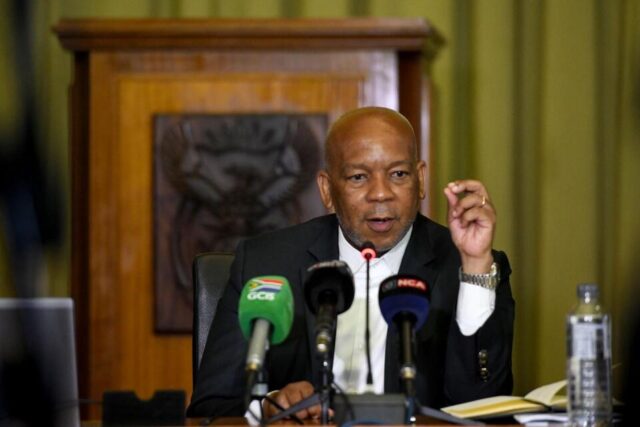Minister of Electricity Kgosientsho Ramokgopa will be leading the government negotiations with European investors seeking to finance the required expansion of South Africa’s transmission network in a bid to plug the electricity deficit.
MINISTER of Electricity Kgosientsho Ramokgopa will be leading the government negotiations with European investors seeking to finance the required expansion of South Africa’s transmission network in a bid to plug the electricity deficit.
Ramokgopa said on Tuesday that the on-boarding of new generating capacity, particularly renewable energy, was critical to ensuring that additional capacity was added to the national grid as generation capacity was constrained.
He said that Team SA had established a rapport with private sector investors at the World Economic Forum (WEF) annual meetings in Davos last week and those negotiations would now be taken forward.
“As the president said last week, the Minister in the Presidency responsible for electricity is now given the responsibility to ensure that we are able to go into the market to procure or to access the financing in relation to the transmission side,” Ramokgopa said.
“The team was in Davos (and) part of those conversations was to enter into bilateral discussions with some of the potential financiers.”
South Africa plans to aggressively expand and strengthen the transmission grid, but the fiscus cannot afford the estimated R390 billion needed for about 14,000km of new power lines.
Ramokgopa said Eskom had a “three-year horizon” which is funded to build 1,400km of transmission lines, but that was not sufficient and private investors were needed to buttress this project.
Eskom is being unbundled into three separate units: Generation, Transmission, and Distribution, in order to clean its debt-laden balance sheet and attract potential investors into any of the stand-alone units.
“What we have always suspected to be the facts were in fact validated through that conversation that there is a significant amount of liquidity in the private sector that is willing to come into the space of transmission,” Ramokgopa said.
“In fact, even this morning we had conversations with the heads of missions that are represented here in the country, the major Western powers from the European countries who are member states of the EU, and they did confirm the availability of that financing.
“Of course there’s a Just Energy Transmission Programme and implementation plan, so we know that there’s also that facility that has been made available on the transmission side to help us to finance a transmission.
“The challenges on the transmission side are almost equivalent to the ones on the generation side and, in fact, if they are not tackled immediately they are likely to be even more catastrophic compared to the challenges on the generation side because those are likely to undermine our ability to maintain the integrity of the system.”
Although private sector participation is being encouraged in the transmission space, the South African government will remain the owner of the grid through the Eskom-owned and newly established National Transmission Company of South Africa.
Ramokgopa said the financing of the transmission grid had to be aligned with the work that Eskom was doing and not undermine or compromise the process by putting at risk the unbundling of the power utility.
Ramokgopa also said they were working on business models, alongside the Development Bank of Southern Africa (DBSA) and the Industrial Development Corporation, which would accommodate the office that would manage the financing of the transmission grid.
DBSA last year proposed innovative transmission financing mechanisms such as an Independent Power Producer (IPP) procurement funding using grant and concessional finance offered by multilateral and regional development banks.
“What we have been doing is to find an architecture and legal configuration on how best we are going to access (funding), and one of the areas that is receiving attention is the possibility of us putting together something that is akin to the IPP office on the generation side, an Independent Transmission Project office,” he said.
“(This is) to ensure that we are able to procure with speed, agility, applying some degree of innovation and ensure that we are able to access that liquidity that’s sitting with the private sector without relinquishing state ownership of the grid.
“There is an insatiable appetite by the private sector to invest in this space. So we are not short of financing. Liquidity is significant there. The issues that we need to resolve are the governance framework on how you are going to go out and procure, and issues of sound transparency.”
– BUSINESS REPORT








